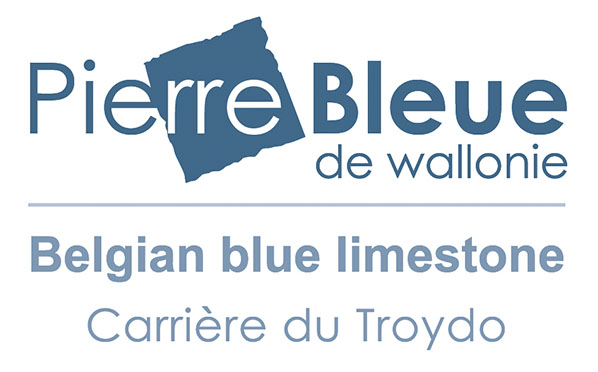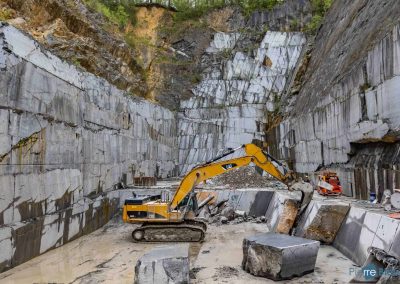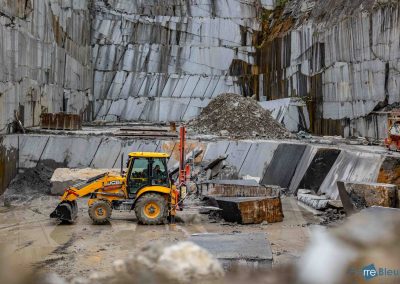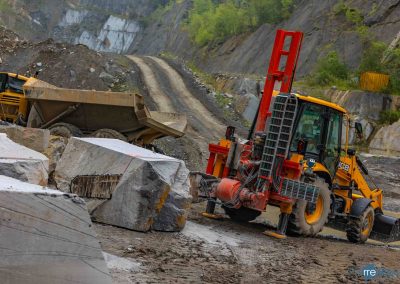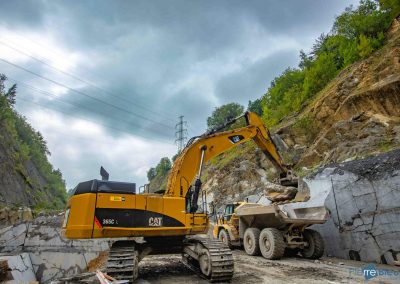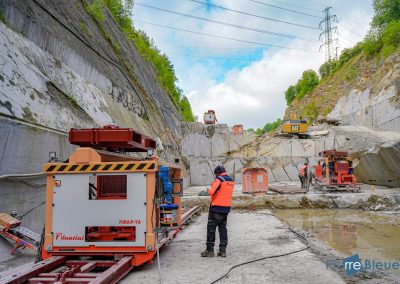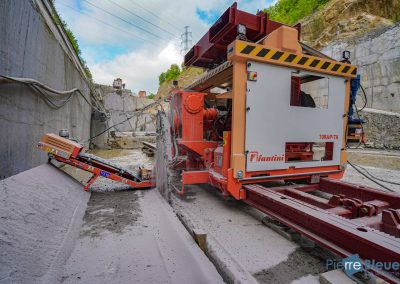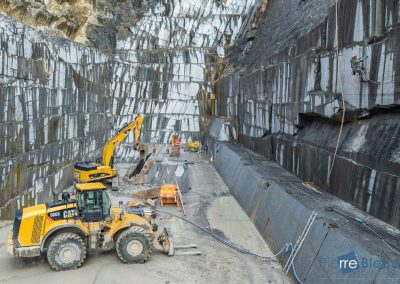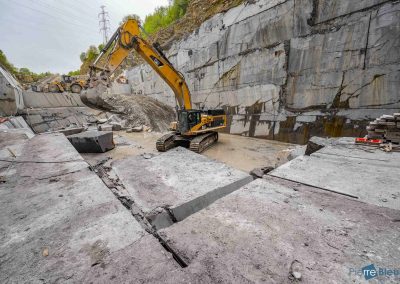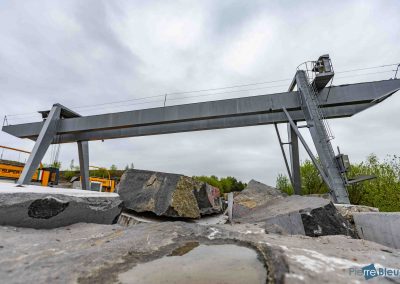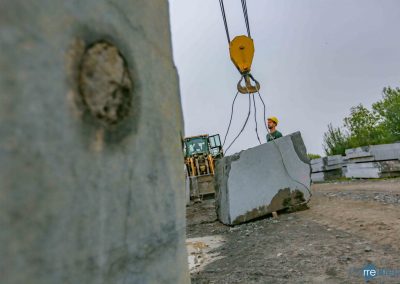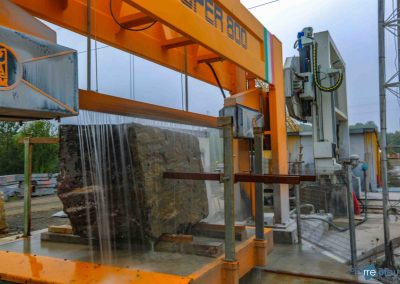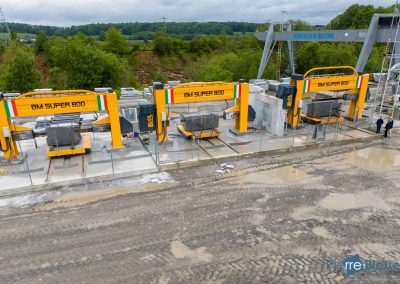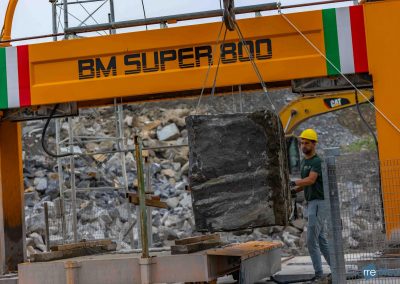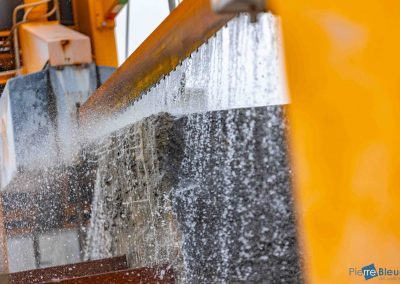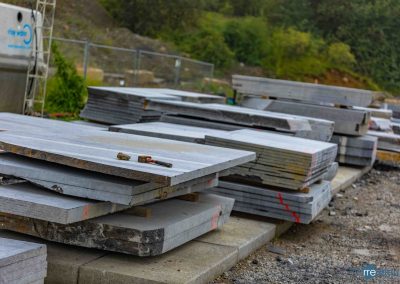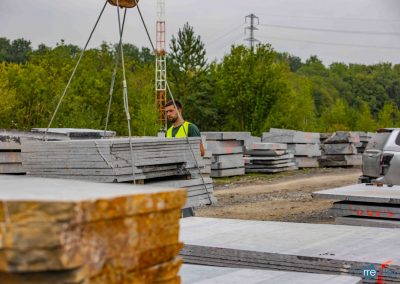Extraction and sawing of bluestone
Extraction and sawing of bluestone
Extraction techniques
This division of the quarry into several signed areas also allows for a better traceability of the limestone.
The quarry simultaneously exploits at least 3 areas for efficient exploitation and to permanently offer a choice of blocks in several beds.
This is why there is room to open several ‘buffets’ with the extraction technique used at the Troydo quarry to simultaneously extract limestone from different beds. This is to sell limestone that can be used for different things.
The extraction technique (as soon as the extraction area is opened) is sawing and excavation. The blocks are extracted by the excavation technique which consists of using a ‘skidding’ tooth or a suitable bucket mounted on a digger.
Sawing the limestone
Heavy quarry machinery, such as dumper trucks and loaders with large load capacity tyres are used to lift the blocks and do the stripping work.
We favour this so-called ‘gentle method’ so as to guarantee quality Belgian bluestone and avoid potential cracks often caused by extraction using explosives.
The company has a unit of secondary saws which are used to square off the blocks (removal of crust).
